
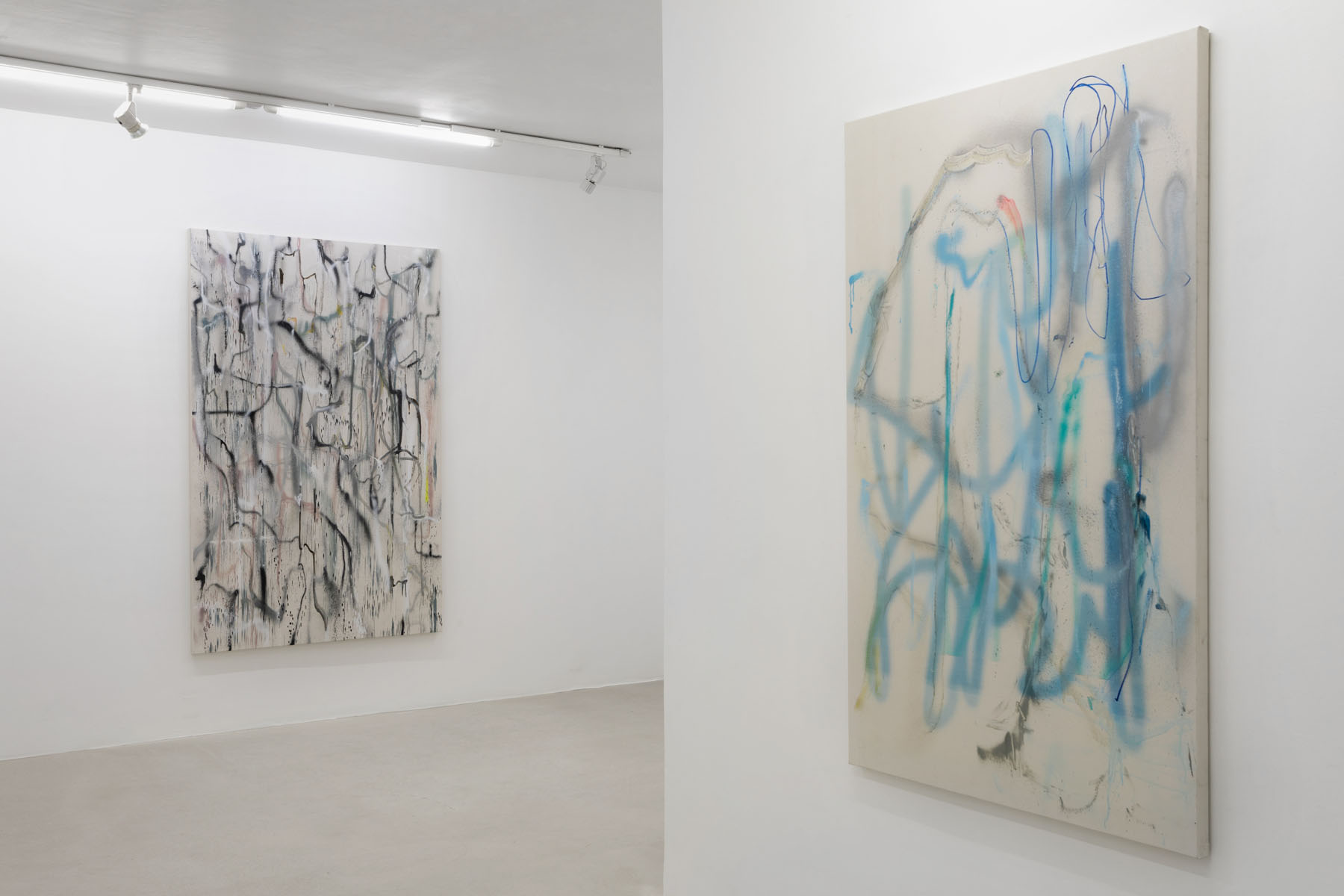
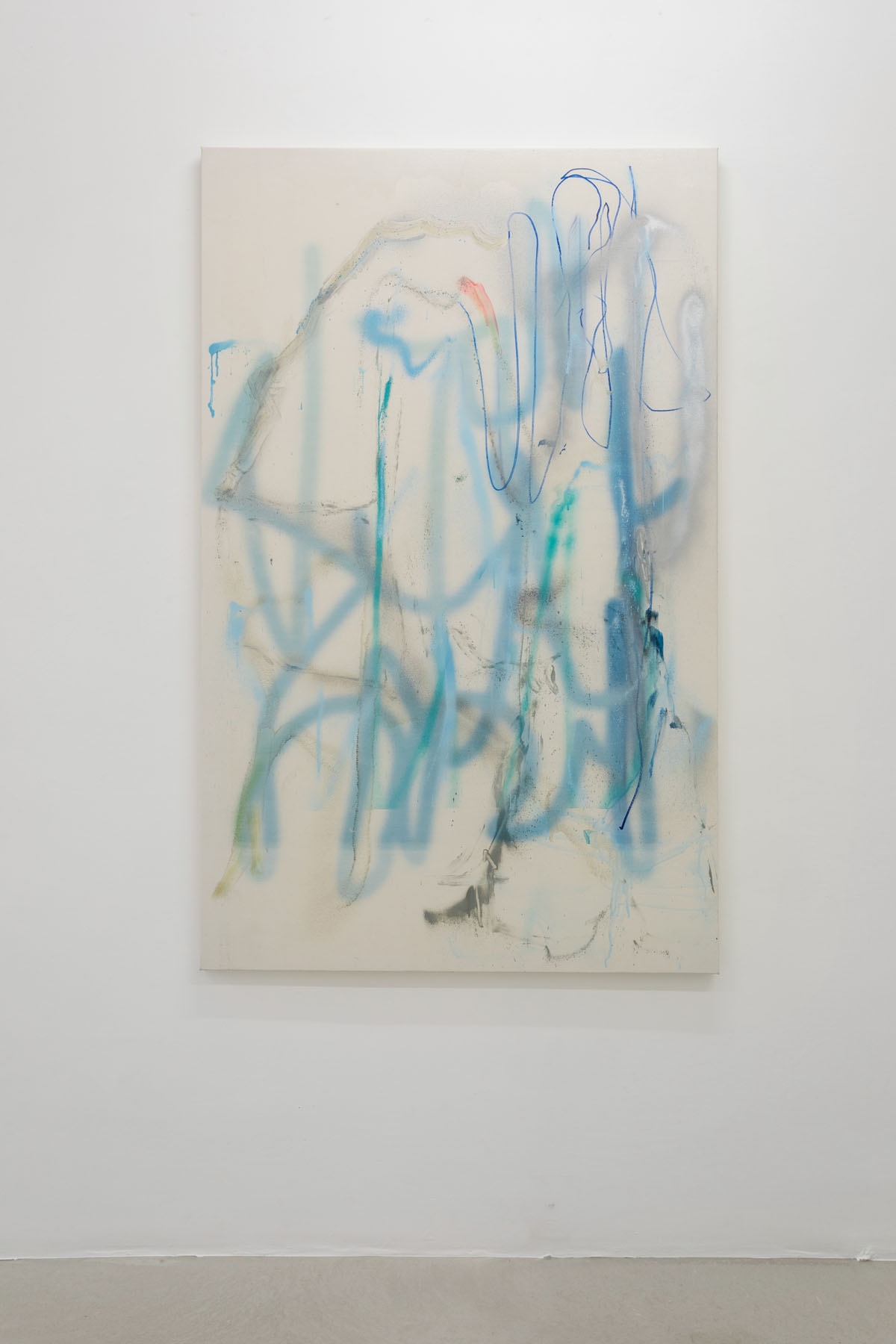
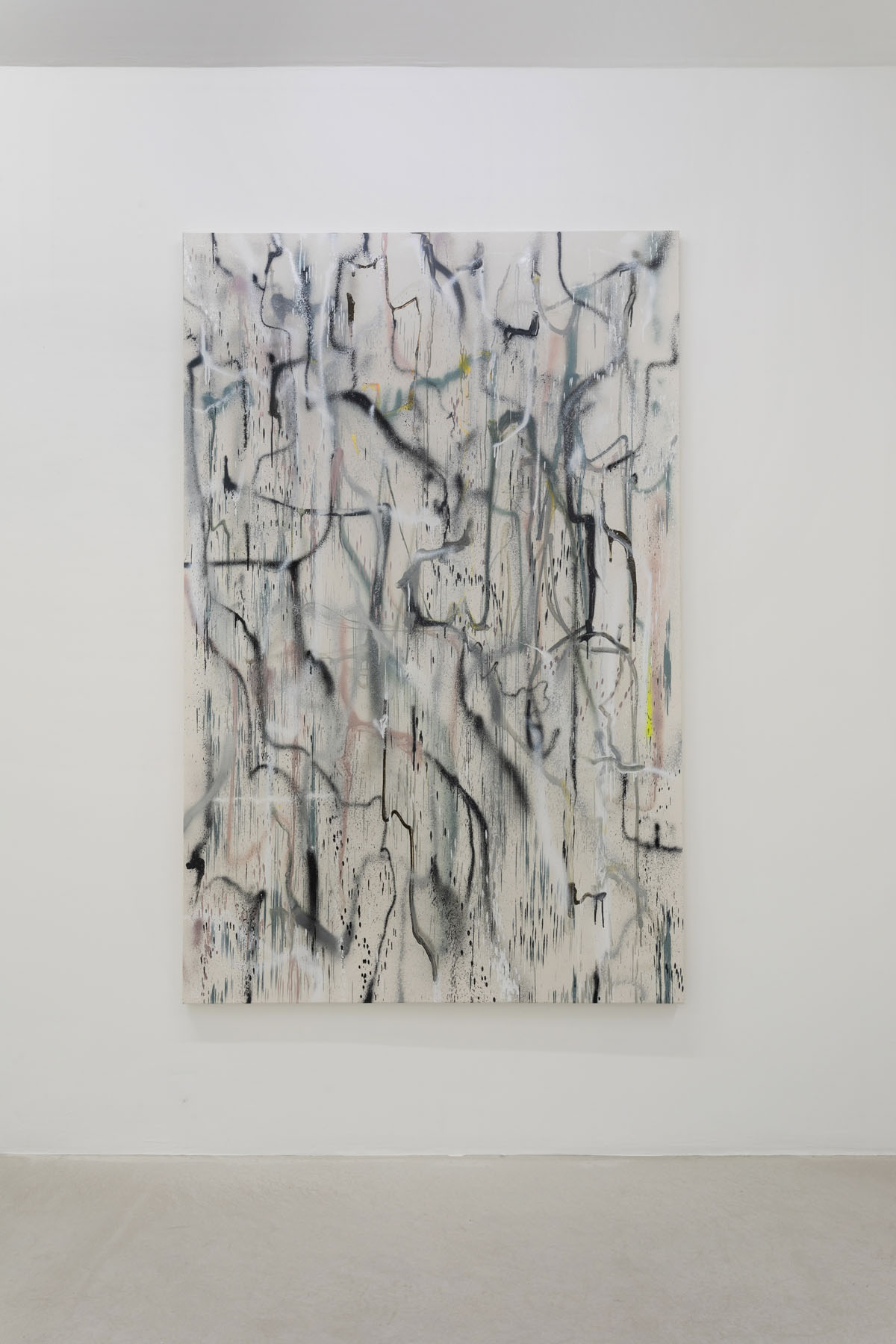
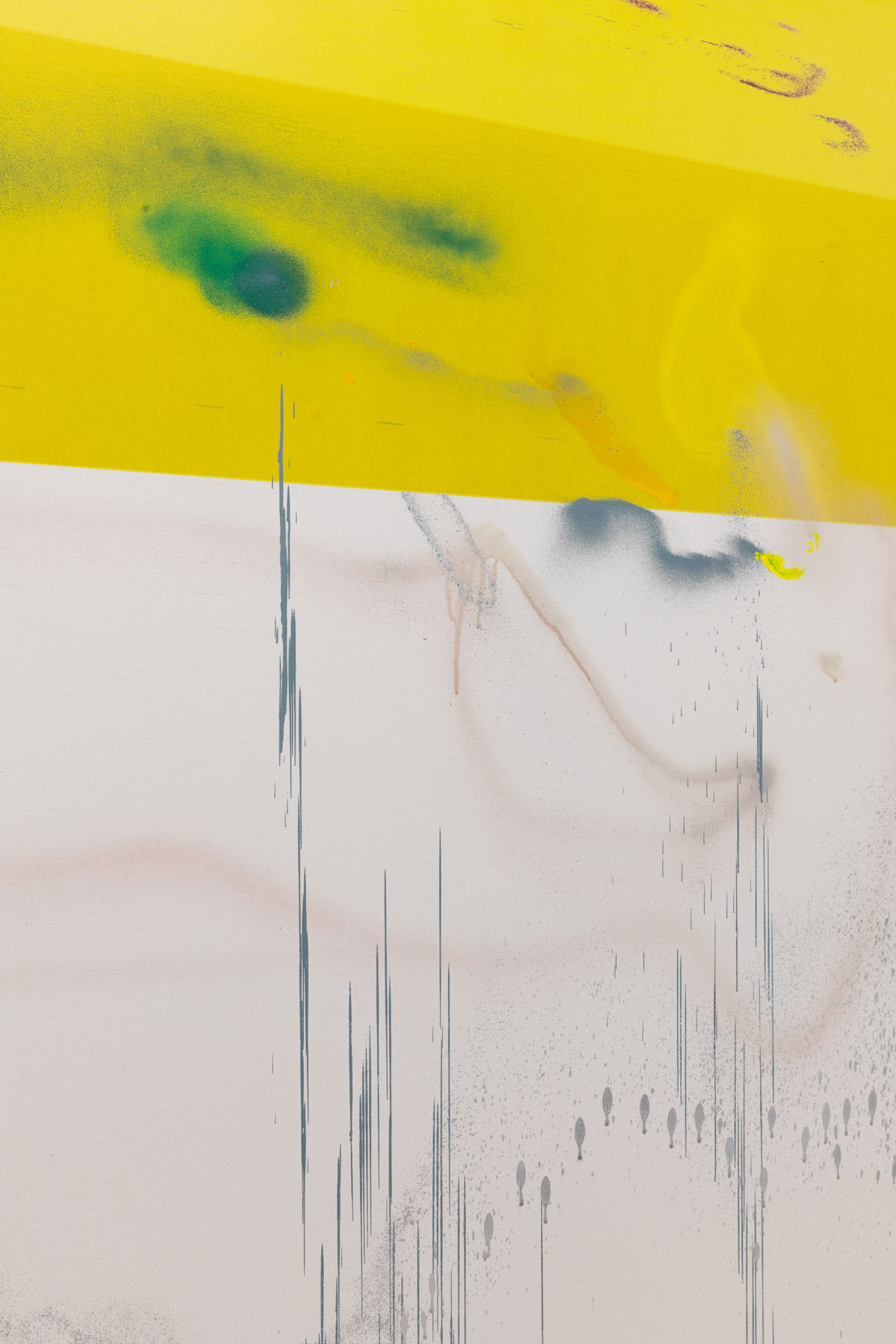
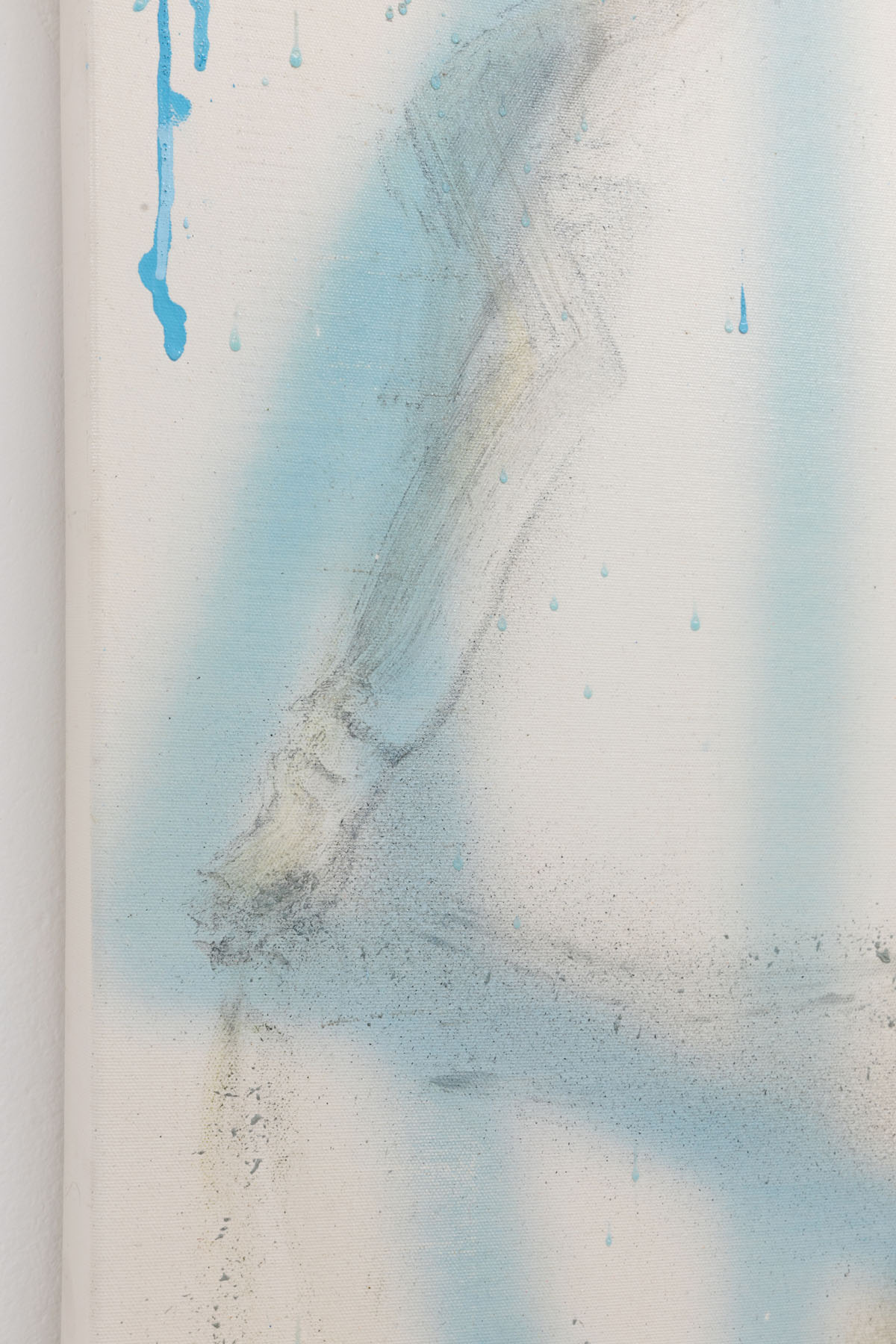
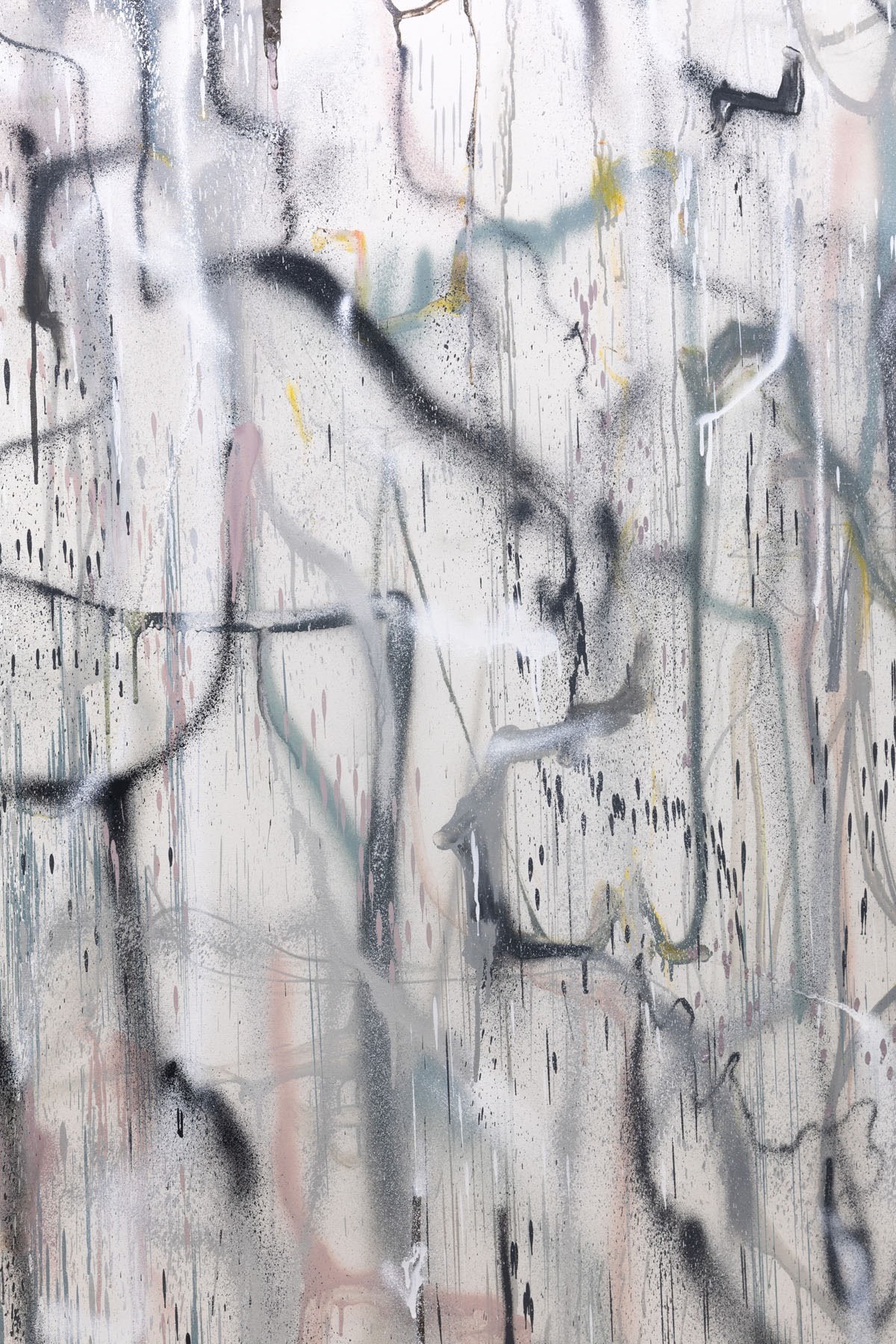







Abstract art often looks like a way of secularly addressing areas beyond human existence. In the case of expressive abstraction, we are talking about the ritual dissolution of a human gesture in a generalized rhythm of symbolic nature or ritual. Geometric abstraction refers to the superhuman nature through schemes and simplified forms, suggesting intuitively comprehended, but rigid models (interpretations) of the world. Perhaps for the last ten years there has not been a more beautiful geometric abstraction than big data visualizations – a final stage in the evolution of the Suprematist Architecton, devoid, however, of any connections to social justice projects.
Oleg Ustinov´s abstraction lies somewhere between expression and non-objectivity that has been immersed in the information field. To respond to expressive abstraction, we must return to the state of archaic enthusiasm towards the magic of the human trace. This is how, for example, the writings of Cy Twombly work, hovering between text and music, where a sequence of signs can describe both poetics and phonetics with equal probability. The abstraction about order is speculative. Ustinov masterfully mixes expression and order in search of what he calls “catastrophe”. Apparently, a “catastrophe” in his paintings occurs if one succeeds in breaking through the limits of identification. Going back to uncertainty, pre-human and pre-technical.
In terms of style, Ustinov’s works seem to be expressive and look for sensual inclusion, that is, decoding lines and colors as a direct reaction to the collision of external and internal stimuli. But this process also involves a predestination that lies beyond the limits of pictorial intuition. Almost all of Ustinov’s abstract works emerge as an alternation of print and “live” gesture. Sometimes printing is made on a canvas that has been marked with manual elements. That is, in each painting there is a gesture created in advance, with additional signs applied over it, and it is not always easy to distinguish printing from painting. His paintings are not a diagram of the statistical probability of God in this corner of the universe, obtained as a result of data overdose, but tangled wires in a server room. One wire can transmit personal letters, another one – only electricity or data exchange packets between IPs.
Since abstraction almost always refers to the supra-individual, it makes sense to talk about Ustinov’s work in the context of the widespread use of facial recognition technologies. The collection of data on users and citizens for the purpose of processing it by commercial and political institutions serves to create detailed consumer and citizen biographies. An abstract painting has a good chance of confusing an attentive pursuer, passing off the personal for the general and the Raw for the Cooked, if we use Claude Lévi-Strauss terminology. Thus, a complex combination of mutual errors, made by a machine and a person, emerges on the canvas. A set of individual gestures does not carry any additional information as it cannot be searched in the databases. But, as in any production of signs, our interpretation depends on the collective effort. We must believe that these paintings were created by a human because only by verifying the authorship by one of our own species we can appreciate the intensity of the leap into something that lies beyond human existence. Perhaps soon there will be abstraction recognition algorithms, and every smartphone owner, pointing the camera at something non-objective, will be able to find out in a second who is behind this abstraction – a real person, artificial intelligence, or a place of their collision on the horizon of a catastrophe.
Valentin Diaconov